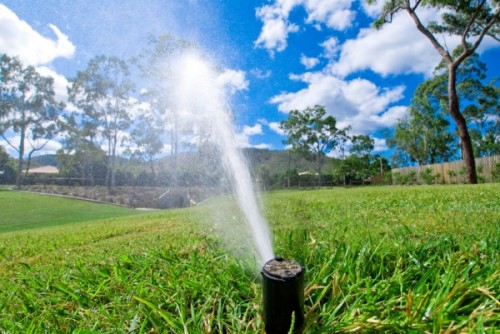
Modern conveniences have made it easy to forget how much water we’re using and where that water really comes from. This makes it even more difficult to grasp how your water usage habits can have a long-term impact on the collective water supply.
With a predicted water deficit of 560,000 acre-feet (one acre foot is 326,000 gallons) in Colorado by 2050, water conservation efforts in states that rely on the Colorado River for their water supply have never been more important. Though some states such as Colorado and California have adopted laws that encourage the installation of more water efficient toilets, faucets, and showerheads, these small adjustments are just the first step in preserving the water supply for the long-term.
While water conservation efforts have historically focused primarily on water usage inside the home, the current conversation around water conservation is shifting its focus to water usage outside of the home. Continuously running your sprinklers may be healthy for your lawn, but it’s not so great for the long-term health of our water sources like the Colorado River. Although most of the water used indoors eventually makes its way to a water treatment plant where it is recycled and ultimately repurposed, the same cannot be said for water that is used outdoors. The gallons of water you’re spraying on your lawn and driveway, unlike the gallons going down your drain, don’t make their way to a treatment plant and cannot be recycled. Rather, this water is absorbed into the ground, only to later be evaporated into the air.
To make a lasting, impactful difference everyone must do their part in order to save our water. Luckily, there are a few simple lawn care changes that not only save water but can even help keep lawns healthier. Watering your lawn when temperatures are cooler (typically in the morning or evening), for instance, minimizes evaporation as opposed to watering in the heat of the day.
Mowing your lawn? Don’t bother collecting the clippings. Rather, leave them on top of your grass in order to cool the ground and hold in moisture. Even better, consider replacing your lawn turf area with more water efficient plants and materials like cacti or landscaping rocks.
Population growth in the West shows no signs of slowing down, which means a continued strain on the Colorado River and other water sources in the region. While Colorado has taken an important step in developing the first-ever statewide water use strategy, the Colorado Water Plan, we will also need conscious collective action for this plan to effectively conserve water. Cultivating a culture of conservation in the West is vital to ensuring that this continues to be a sustainable place to live for generations to come – and we can’t do it without your help.
What are you waiting for? Turn off those sprinklers MORE OFTEN and together we can do more with less.
To learn more about how you can make sure that our water remains readily available and usable, check out some of these helpful resources and get started conserving today:
- Calculate your water usage
- How We Use Water
- The EPA’s WaterSense
- Water Conservation Tips & Tools
- More video Tips & Tools


